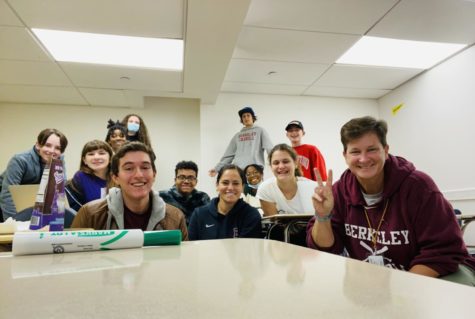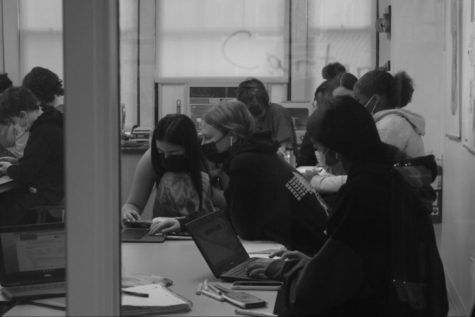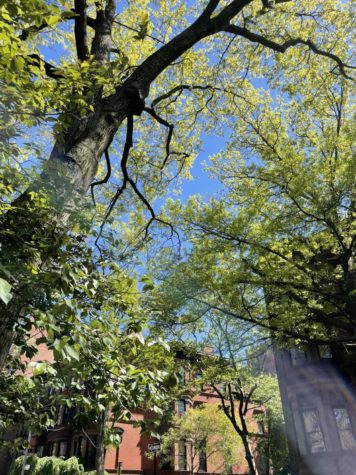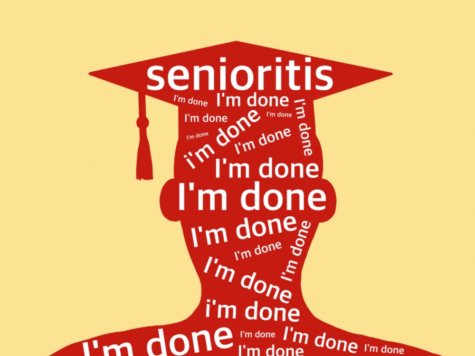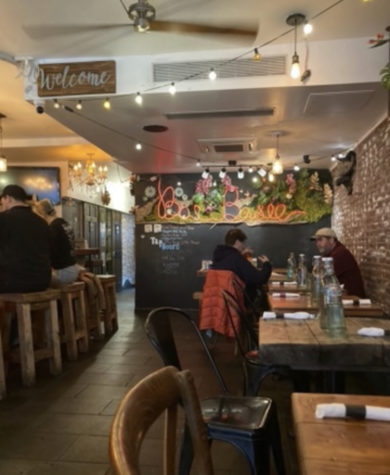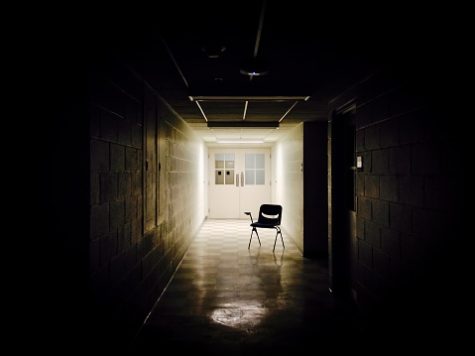SDLC 2017
The Student Diversity Leadership Conference (or SDLC) is a place where everyone shares a passion for social justice and transformation. At SDLC, we are validated and we learn tools to carry out this passion to make change in our communities at home. This year, the event was held in Atlanta and attended by six Berkeley Carroll Students.
Peer Facilitating – Darrell Pona
Brave new students or returning SDLC participants are given the opportunity to help Facilitators lead discussions. Before everyone else has arrived to the conference, peer facilitators meet and prepare for the incoming 16000 students they will help educate. As a peer facilitator, you practice coming up with thought provoking questions. Once a peer facilitator gets good enough, they can use their questions to subtly navigate students into their own perspective. Peer facilitator can eventually teach people their point of view without actually teaching at all, it is as simple as asking the “right questions” (The infamous Rodney Glasgow) . In each family group there are home groups and peer facilitators are given the opportunity to practice all they have learned and lead discussions in a group of about 10 new students. The overall duty of a peer facilitator is to be a good role, help lead small group discussion, and help facilitators in whatever way they need.
The Importance of a White Affinity Group – Keelan Clifford
A diversity conference may seem like a very strange place for a white girl to go. However,the beauty and strength of SDLC is that it includes every person and makes sure that their voice feels heard and accepted–regardless of their race, gender, sexuality, socioeconomic status, mental ability, physical ability, or lack thereof . At SDLC we break into affinity groups based on race or sexual identity in order to have safe spaces of open and free dialogue with people of similar identifiers as us. I decided to attend the white affinity group due to the fact that I have never found a white affinity group in the past that has cracked the case of “whiteness”.
I have noticed in the past in many white affinity groups the central theme seems to be focused on the ever present feeling of “white guilt”and the reality of white privilege. However, instead of focusing directly on white privilege alone, my affinity group addressed the intersectionalities of white privilege (race, gender, class, sexuality, etc.) and white responsibility. As white people, our lives have the possibility of being hard, but they are not hard because we are white. Therefore we have responsibility to help people who do not have this privilege.
Family Groups–Handlie Pierrot
Every year at the Student Diversity Leadership Conference there is a theme. This year’s theme was political activists. Political activists such as Rigoberta Menchú, Angela Davis, and Malcolm X were mentioned. The names of these activists were the names of our family groups. A certain number of students were placed in a family group, where they met students from different areas. Within each family group there were facilitators that led the many discussions we had about core identifiers such as socioeconomic status and gender. In order to educate other people, one has to know what they’re talking about. Family groups helped students understand and think about through different activities how these core identifiers play a role in our communities. A family group was also a safe space. We were given a lot of time to talk about our experiences, or how we felt about topics such as ‘Pro Life or Pro Choice’, without anyone inappropriately disagreeing with one another. In addition to that, we used the terms ‘ouch’ and ‘oops’, to indicate how someone felt after a somewhat hurtful thing was said. Being in the same space for two days causes students in their family group to form a bond with each other, and have a connection.
Guest Speakers–Toluwani Roberts
Faculty and students gathered in the large auditorium facing a black stage placed a few feet above us. Our eyes were blessed with a performance by middle school students and an introduction of the conference by the president of NAIS. Then, Bryan Stevenson took the stage. Mr. Stevenson is an American lawyer, founder of the Equal Justice Initiative, and a social activist. He stood in front of us that day sharing narratives from his work as a lawyer and anecdotals of his interactions with others.
One narrative that stood out was his description of the transformation of a racist prison guard. This prison guard gave Mr. Stevenson a hard time whenever he came to that prison to speak to his client– Mr. Stevenson had to succumb to a strip search every time to get inside. During his meetings with his client– a mentally ill black man in prison– the client would always ask for a strawberry shake, and the guard would watch him closely. The guard was also present with the client when Mr. Stevenson was in court arguing, with passion, for his client’s exoneration. After this day in court, Mr. Stevenson came to the prison to meet with the client again. He prepared to move into the usual room for the usual strip search when the guard stopped him. He opened the door for the prison and let him in. He walked to the next door and fumbled with the keys to the room Mr. Stevenson’s client was in. When he finally managed to open the door, the prison guard looked nervously at Mr. Stevenson and told him his own life story. The prison guard, like the client, was in the foster system as a child, and was often forgotten. He saw the passion with which Mr. Stevenson was arguing for this prisoner and he was moved; so moved in fact that he took the prisoner to buy a strawberry shake on the ride back to the prison after that day in court.
It was with these moving stories that Mr. Stevenson gave us all four tools to change the world:
- Get proximate to the people and places in which injustice is present
- Change the narrative behind the problems we are facing
- Stay Hopeful
- Be willing to do uncomfortable things
The next guest speaker was solely for the students. His name is Zak Ebrahim, a former muslim whose father was a terrorist. He shared with us his life story of living under his father and how his view of the world changed over time. As a child, he was ignorant of the extent of his father’s true beliefs. When his father was put in jail after attempting to car bomb the World Trade Center, he and his family went through a crisis. They carried the weight of the label “terrorist” everywhere they went, and they moved constantly. Zak still lived, however, in a bigoted household until many years later – in his 20s – when his mother told him, “I’m tired of hating people.” He left us with a lesson that doesn’t relate so closely with his story, but that he learned from life: to make change, get involved in your community first.
It is important to note that his story was very controversial. Many of the Muslim students at SDLC felt misrepresented by him. Zak Ebrahim has a remarkable story, but it is also remarkably rare. The pain Muslim students felt at this misrepresentation was deepened by the fact that he no longer identified with Islam because of these experiences, suggesting that Islam means violence. Many students asserted that Islam is, indeed, peace.
The last guest speaker for students was introduced during the SDLC Closing Ceremony. Mr. Lee introduced us to his work to facilitate conversations on identity. Mr. Lee is also known as the “white whisperer.” He left us with various lessons.
One of them is what he calls Steps to New Awareness. When we enter a new space, we move from unconscious incompetence, to conscious incompetence, to unconscious competence to reflective competence. An example he gave is when you go to a friend’s house for the first time. You walk in with your shoes on – unconscious incompetence. Your friend then stops you and tells you to take off your shoes. You are now aware of your incompetence – conscious incompetence. The next time you come to your friend’s house, you take off your shoes – conscious competence. The more you visit your friend, taking off your shoes before entering becomes a habit – unconscious competence. Reflective competence is when you take your new competence and generalize it – every time you enter any friend’s house, you take off your shoes. The cycle of awareness begins again when you enter a house where taking off your shoes is not the norm.
Another lesson he left us with was how to combat incompetence in others, and in our community.
- Interrupt Bigotry – call it out and discuss
- Explore and Understand your role (as an active ally/activist)
- Be comfortable being uncomfortable
The most important thing is to embrace and enjoy this process.
On the last day of the conference, the faculty and students gathered together at the PoCC Closing Ceremony. We first had the phenomenal honor to honor three civil rights leaders: Hank Aaron, Christine King Farris, and John Lewis. Having witnessed history, our hearts were swell and ready for the last message, which came from a young woman named Brittany Packnett.
She talked about her own experience growing up as a black girl in independent school. She shared with us the racism she faced, and the growth of her voice. A shocking narrative is when she was spit on by a white boy in a grade above her after some conflict. She did not necessarily blame him for that act, but told us to look at the rots, the light, the fertilizer and water that makes the tree; the tree being the kid who felt bold enough to spit in her face. The roots and the light and the fertilizer and the water is the silence of the leaders in that school community. She demanded that faculty use their power. She called on both faculty and students to put our truth before the good of the institution. Her words reminded us all why we were there, and reminded us of our duty when we returned to our schools: Speak up and speak out.



